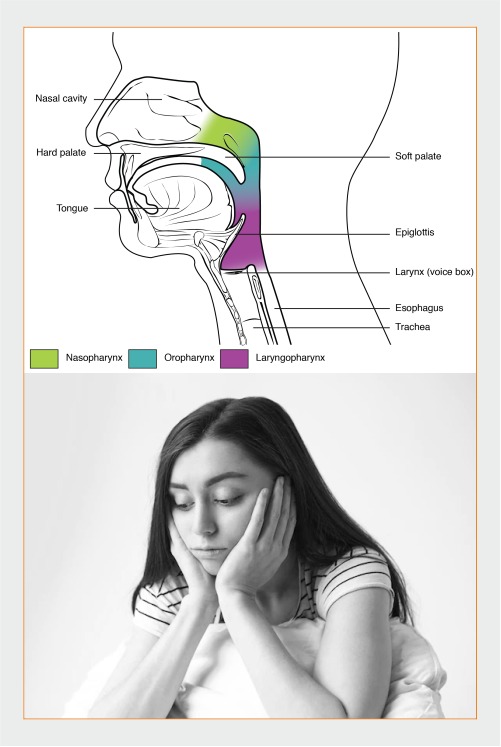What is Obstructive Sleep Apnea (OSA)?
Obstructive Sleep Apnea (OSA) is a type of sleep-related breathing disorder wherein the upper airway gets obstructed (closed) during sleep, leading to snoring, frequent awakening, and choking episodes during sleep.
Who gets OSA?
Risk factors include obesity ( BMI >25, neck circumference > 17 inches for males and > 16 inches for females), enlarged tonsils, and chronic nasal congestion.
An individual with hypertension, diabetes and chronic kidney disease also carries a high risk of developing OSA.
What happens in OSA?
The pharynx is the part of the airway that is present between the base of the tongue and the trachea (windpipe). it is not supported by any hard tissue like bone or cartilage and hence is highly prone to narrowing. During sleep soft tissue and muscle surrounding the pharynx relax causing narrowing air passage. Initially, there is a snoring sound, but as the disease progresses, the pharynx closes completely, causing a choking feeling and awakening. This is called an obstructive event, such events are repeated overnight leading to OSA.
What are the symptoms of OSA?
Symptoms of OSA are due to frequent obstructive events and frequent stimulation of the brain to keep the pharynx open. loud snoring, daytime sleepiness, nonrefreshing sleep, early morning headache, choking episodes, dry mouth, and low oxygen during sleep. It also leads to poor control of other diseases like hypertension and diabetes. Frequent involvement in accidents may occur in severe cases
How the diagnosis is made?
Diagnosis of OSA is made based on symptoms, physical examination ( including neck circumference, BMI), and Polysomnography testing. Polysomnography is the confirmatory test for OSA. It measures obstructive events per hour known as Apnea-Hypopnea Index (AHI)
What happens in OSA?
The pharynx is the part of the airway that is present between the base of the tongue and the trachea (windpipe). it is not supported by any hard tissue like bone or cartilage and hence is highly prone to narrowing. During sleep soft tissue and muscle surrounding the pharynx relax causing narrowing air passage. Initially, there is a snoring sound, but as the disease progresses, the pharynx closes completely, causing a choking feeling and awakening. This is called an obstructive event, such events are repeated overnight leading to OSA.
What is the treatment of OSA?
OSA is treated with Positive Airway Pressure (PAP) therapy, wherein air is delivered to the upper airway with pressure. This pressure prevents the closure of the pharynx keeping it open and hence preventing obstructive events.
Does PAP therapy help? What are the side effects?
Yes. PAP therapy has been shown to improve AHI levels, improve oxygenation. PAP therapy also helps inadequate control of other comorbidities like hypertension and diabetes. Side effects of PAP therapy include nasal irritation, nasal dryness, mask leak, and disturbance due to noise.
What are other treatment options for OSA?
PAP therapy is the treatment of choice however if it can not be given, other treatment options available are intaoral device and position therapy. Surgery to reduce soft tissue in the pharynx is performed in severe OSA.
What happens if OSA is not treated?
If not adequately treated, OSA may lead to decreased cognitive functions, poor memory, and mood disorders like depression. OSA also increases the risk of Heart Attack and stroke.
How to prevent OSA?
Obesity is the most common risk factor leading to OSA, hence weight reduction and maintaining a BMI of less than 24.9 decreases the risk of developing OSA. Following Sleep hygiene improves the quality of sleep and decreases daytime sleepiness.
What is Sleep Hygiene?
Sleep hygiene includes good sleep habits that help you get a good night’s sleep. Some habits that can improve your sleep health are being consistent. Go to bed at the same time each night and get up at the same time each morning, including on the weekends Make sure your bedroom is quiet, dark, relaxing, and at a comfortable temperature Remove electronic devices, such as TVs, computers, and smartphones, from the bedroom. Avoid using them 30min before sleep time Avoid large meals, caffeine, and alcohol before bedtime Get some exercise. Being physically active during the day can help you fall asleep more easily at night.

